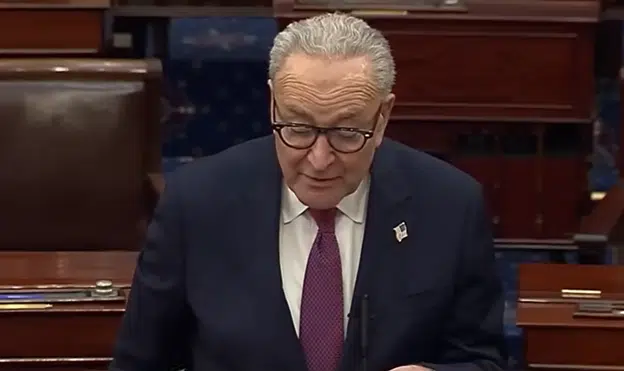By Natalia Castro
Click here to tell Congress to build the wall now!
Whenever President Donald Trump brought up immigration on the campaign trail in 2016, his own voice was often drowned out by supporters shouting, “build the wall, build the wall!” Trump’s favorite social media platform, Twitter, has even been trending #buildthewall since before he was even elected as President.
A simple policy slogan united the American people around Trump last year, but now it is Congress that must unite to make this dream a reality — or the midterms could mean the end of Republican control.
After the election, House Speaker Paul Ryan rallied behind President Trump’s position on constructing a strong border wall, but now he seems to be back tracking, as if he is surprised about opposition.
In late March Ryan spoke about delaying the wall, noting on CBS News that “The big chunk of money for the wall really is next year’s – next fiscal year’s appropriations because they literally can’t start construction even this quickly.”
This is different than seemingly all of Ryan’s past positions, which have led Americans to believe the wall is moving forward.
On December 9, 2016, Ryan was asked on Sean Hannity specifically asked if Trump and House Republicans would disagree on immigration, but Ryan asserted, “We are working on a common platform…we are working on getting border funding up and running right away…that is enforcing current law. What President-elect Trump has asked us to focus on is enforcing current laws…and getting the border secured. So that is what he said he wants us focusing on, and that’s exactly what we’re working on.”
Based on this alone we would assume legislation to promote the wall would come immediately, as Ryan said it is simply building the infrastructure to enforce our current, most basic laws.
Ryan’s support continued into 2017, him and Senate Majority Leader Mitch McConnell stood alongside each other on January 26 in Philadelphia, and explained emphatically that “We are moving ahead” with the wall with a specific price tag of “$12 to $15 billion,” adding, “We intend to address the wall issue ourselves.”
A day later, in Washington, D.C., Ryan continued to defend that once Mick Mulvaney was confirmed as Office of Management and Budget Director, the House could receive a supplemental plan from the White House and is “hoping in the first quarter we can get this done.” He continued to note that, “This something we want to get on right away. And so we do believe this is one of the most important promises the president made running for office. It’s a promise he’s going to keep and it’s a promise we’re going to help him keep.”
Mulvaney has been confirmed since Feb. 16, 2017; with a supplemental request proposed on March 14 and formally sent to Ryan on March 16. Yet no action has been taken.
Republicans seem to be backing down in order to prevent a Senate filibuster from Democrats. At a March 28 event organized by the National Council of La Raza, Senate Minority Leader Chuck Schumer suggested, “Senate Democrats are prepared to fight this all the way.” When asked if Senate Democrats would shut down the government over the wall, Schumer offered, “We hope our Republican colleagues work with us and not put it in.”
The same day, Sen. Roy Blunt (R-Mo.) suggested at a Republican leadership press conference that “All of the committees, House and Senate leaderships, are working together to try to finalize the rest of the FY17 bill… My guess is that comes together better without the supplemental,” which Blunt said would be dealt with “at a later time.”
Just two days before Ryan changed his position, Democrats made their threats and Republicans have apparently changed their planss.
But Ryan cannot pretend that in September, Democrats will not try the same thing. Backing down now would not bode well for getting the wall built.
First of all, Democrats don’t agree with the wall today and certainly will not in September. If Chuck Schumer wants to bring the government to a partial shutdown to prevent the wall from being added to the budget — that is exactly what he is going to do, this year or next.
Republicans cannot wait to see how Schumer is going to react, they promised the American people the wall and need to deliver quickly.
Historically, maintaining a majority during the midterms is an extremely difficult task. Dating back to 1906, White House incumbent parties lose seat in the House of Representatives 89 percent of the time, with losses averaging about 35 seats.
Only three times in modern history have incumbent parties actually been able to gain seats in the midterms, 1934, 1998 and 2002.
Ryan cannot act like the House has leeway to delay President Trump’s promises, Republicans only need to lose 21 seats over the next two years including upcoming special elections, to lose control of the House altogether.
And these special elections have already been shaky, with many calling the Georgia and Kansas special elections a “wake up call” since Republicans are just barely holding onto the seats they won handedly in the 2016 general.
Immigration is the standout issue that made Trump what he is today, and “build the wall” is the policy position that made it all happen. So far, Trump appears to be sticking to his guns, with Politico reporting on April 19 that funding for the wall is among the priorities the administration is asking for in the April 28 continuing resolution.
The GOP Congress needs to prove that they hear the American people, and follow through with the winning agenda Trump has set out. If they fail the build the wall, Trump may be unable to carry them through midterms.
Natalia Castro is a contributing editor at Americans for Limited Government.







